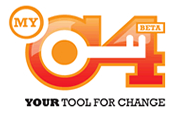When a VC talks about peer to peer lending he is not talking about achieving a good ROI by lending to borrowers. He is talking about the chances he sees in investing in the p2p lending company.
Paul Jozefak, Managing Partner at Neuhaus Partners, did just that as a side note in an interview he gave ReadWriteWeb. Neuhaus Partner invested in the second VC funding round of German Smava.de six month ago.
In the interview Jozefak says, that:
- Smava is at the right time in the right place (current economic situation)
- he sees an upswing in lender and borrower interest; assesses that the model has proven itself
- Their competitors in the US are doing quite well and he expects that Prosper will resolve it’s issues with the SEC.
I agree with the first point, but in my view it is too early to judge whether the Smava model really has proven itself (even the oldest loans are only through two thirds of their loan term). And the last point, I find an optimistic assessment of the situation. One could say that Lending Club is doing well, but Prosper and Loanio are in a situation that could at least be described as challenging.

 In today’s conference call,
In today’s conference call,  Over the last months it became clear that
Over the last months it became clear that 